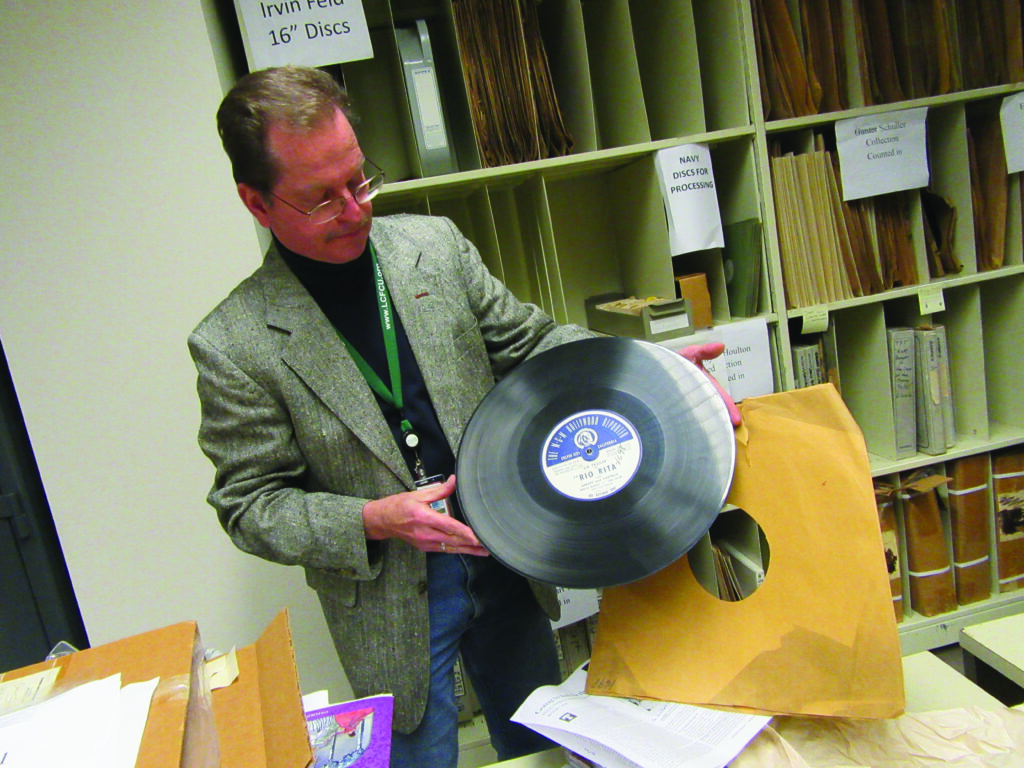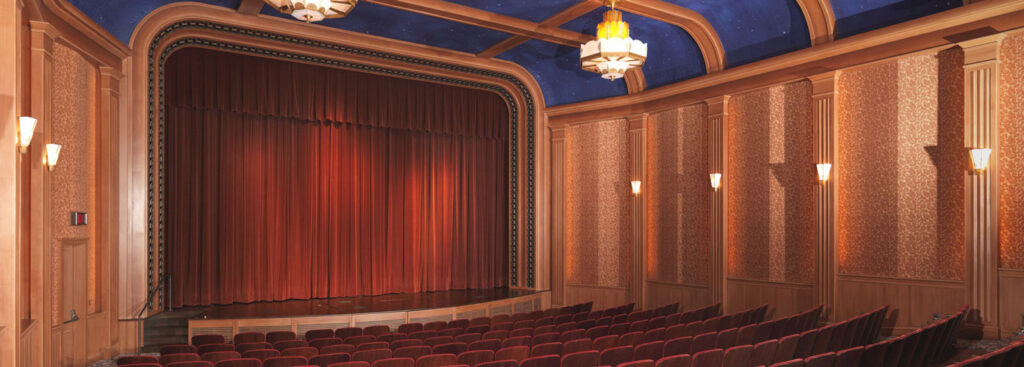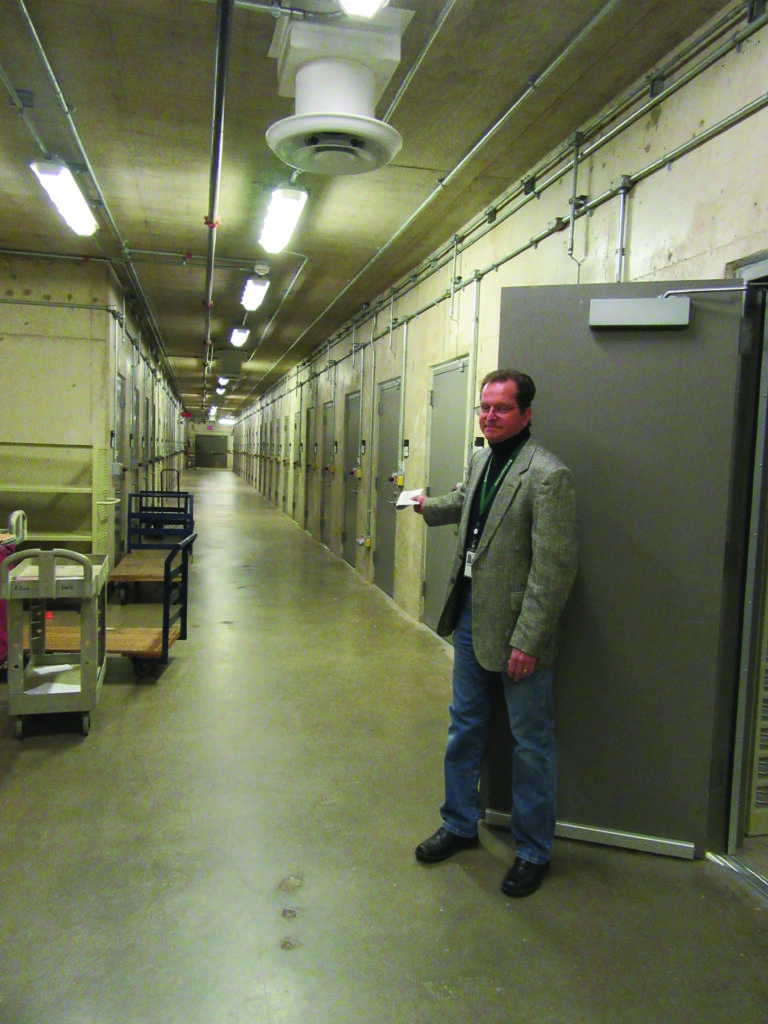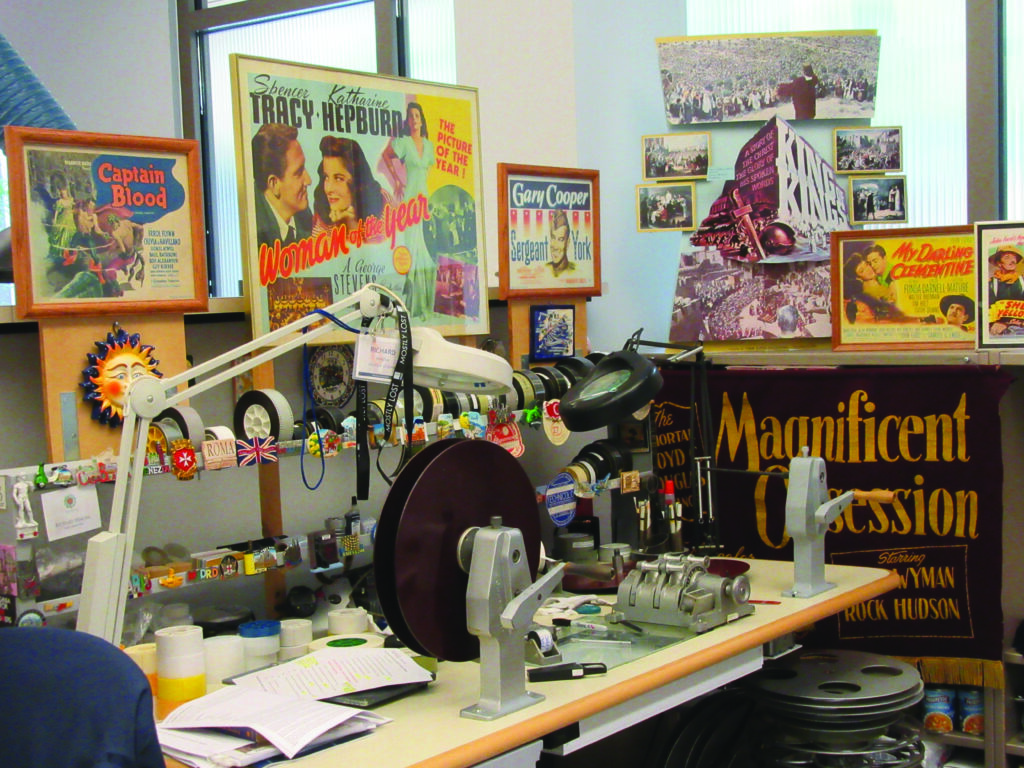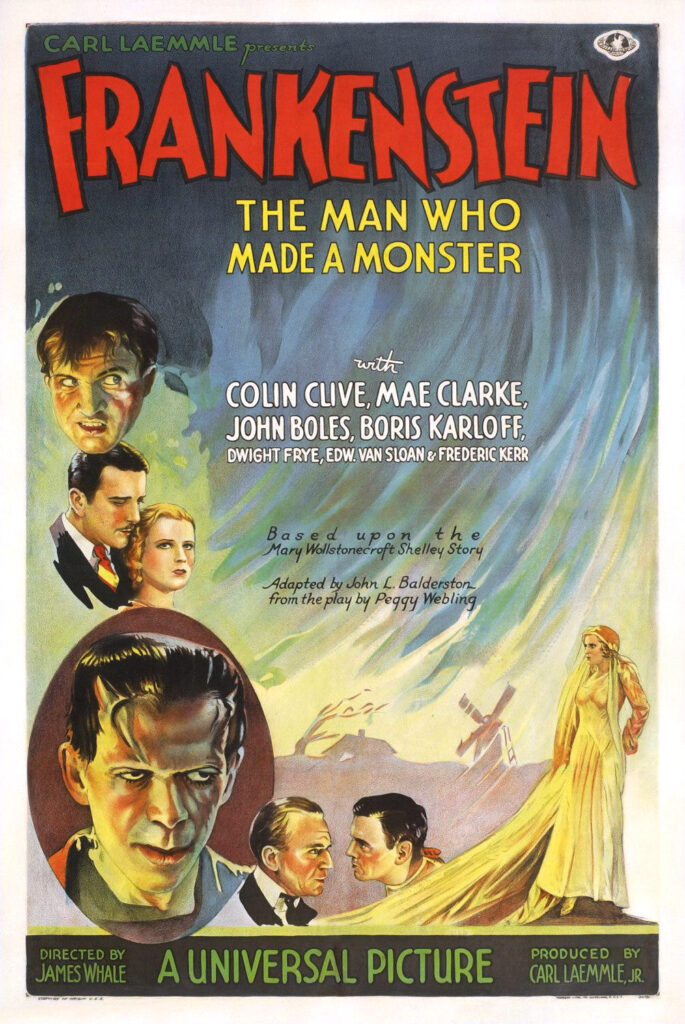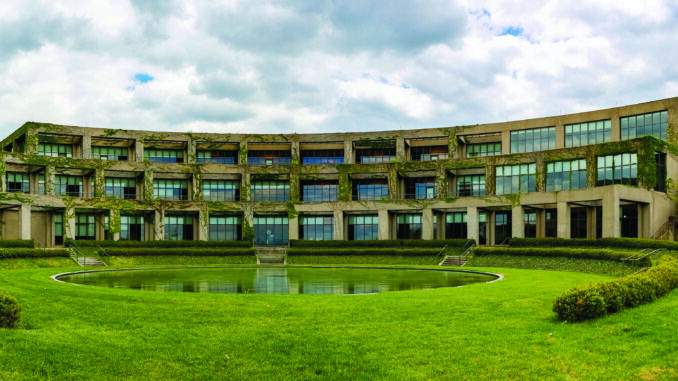
‘AMERICA’S TREASURE CHEST’
By Glenda C. Booth
On Jan. 7, 1894, the Library of Congress received its first request for a motion picture copyright for a five-second, black-and-white silent film of Fred Ott sniffing a pinch of snuff and sneezing. The applicant? Thomas Alva Edison.
Rather than taking a still picture, director William K.L. Dickson had captured Ott’s motion on film. Ott was Edison’s assistant at the Edison Manufacturing Co. in West Orange, N.J., the country’s first movie studio.
The film, “Fred Ott’s Sneeze,” a series of 45 frames, is the country’s earliest surviving copyrighted motion picture. A photographic print representing what was on the film is among the treasures housed in Culpeper in a former Cold War bunker. It’s called the Library of Congress National Audio-Visual Conservation Center’s Packard Campus and it’s about 90 minutes south of Ashburn.
Edison went on to produce over 1,000 films for the public. Of these, 341 are stored at the Packard Campus, including an even older Edison experimental film, “The Newark Athlete,” a 10-second silent from 1891 for which he did not seek a copyright.
The campus has another Edison motion picture treasure, his 1891 kinetoscope, a series of rollers on which film was threaded as a continuous ribbon inside an upright wooden cabinet with a peephole and magnifying lens so one person at a time could view motion pictures. The kinetoscope became popular at penny arcades for watching short films.
Even earlier, in 1877, Edison had invented a tinfoil cylinder sound recording machine. In the 1880s, he improved on it with wax-coated, cardboard cylinders and the Audio-Visual Conservation Center is home to thousands. Late 19th century anthropologists used Edison’s wax cylinder devices to record Native Americans’ languages and songs, probably some of the first recorded human sounds. This recording method was used from roughly 1896 to 1915 before flat disk records came along.
These pioneering inventions are just a few of the priceless items among 7.5 million at the Center.
“We house the audio-visual treasures of the United States,” said Gregory Lukow, the center’s chief and manager of the world’s largest collection of films, sound recordings and radio and television programs, from “Gone with the Wind” to Groucho Marx to Walt Disney’s first “Cinderella” film to “Jurassic Park” to “Brokeback Mountain.”
In non-pandemic times, the Packard Campus shows movies to the public in the 205-seat theater designed like a 1930s movie palace with ornate chandeliers, cloth wall covers and red velvet curtains.
Two projectors play 35- and 70-millimeter films, one reel-to-reel plays 16-millimeter films, and one digital projector plays digital films. A custom-made organ provides music for silent films. Currently, plans call for resuming showings in the theater in January.
THE BUNKER
There’s no roadside sign for the center. Visitors who turn off route 522 onto Mount Pony Road see a gray, concrete building looming next to what looks like a grassy hill. Two streams of steam appear to puff out of the 784-foot mound, but they are actually rising from two chimney-like pipes of an underground building.
Much of the building was constructed in the 1960s and nestled into Mount Pony, the highest point in Culpeper County, for the Federal Reserve Bank to store billions of dollars in currency. Designers wanted the building to be bomb-proof in case Washington was attacked. With additions, today it is a sprawling, 415,000-square-foot, one-quarter-mile-long structure and 90% is underground. Its 173,000-square-foot green roof, the equivalent of three football fields, is one of largest of its kind on the East Coast.
The center archives the nation’s audio-visual heritage: 1.8 million moving images, 3.6 million sound recordings, and 2.1 million related documents. The collection includes radio and television shows and commercials; theatrical films and newsreels; educational, industrial and advertising material; commercial sound recordings, and early voice recordings of historical figures.
But it’s not just an archive. Experts in three preservation laboratories are digitizing much of the collection, including obsolete formats dating back 120 years. Among other challenges, staffers deal with physical degradation and obsolescence, such as lacquer discs and magnetic tapes used from the 1930s through the 1990s.
Preserving American cultural creativity is a calling for these employees.
“It’s the audio-visual history of our country,” said Lukow, the chief since 2007. “It’s vitally important to understand our nation, its strengths and weaknesses, whether its newsreels or Groucho Marx or ‘Gunsmoke.’ It tells us a lot about who we are, what we cope with. We have to understand the historical context. If you read a book, you have to imagine what the people and the times looked and sounded like. With audio-visual products, we can hear and see.”
AV PRODUCTION OVER THE YEARS
A center tour is a tutorial on audio and visual production’s evolution, from Edison’s early devices to today’s cutting-edge digital technologies.
Take movies, for example. Today, production companies send a digital package to theaters. But 100 years ago, a technician hand cranked a projector to unspool and respool reel-to-reel film. The operator could crank faster to speed up a chase scene and crank slower for a crying scene. Between 1925 and 1940, projection equipment had motors and gears to propel reels of nitrocellulose or clear plastic film at a steady speed. This type of film was especially flammable, so theaters had trained union projectionists. Starting in the 1920s, non-flammable “safety film” evolved and schools, churches and homes showed movies using reel-to-reel projectors.
In the 1980s and 1990s, many home movie buffs plunked magnetic tape video cassettes into home video players. Today, people livestream movies to their computer or mobile device or subscribe to a movies-on-demand channel.
SPECIAL STAFF, SPECIAL CONDITIONS
The center’s 115 employees, many with very specialized skills, manage the 7.5 million items and nearly 90 miles of steel shelves and in 184 custom-designed vaults 20 feet underground in spaces set at 30% humidity and a constant 37-degree temperature. The area storing compact disks, vinyl records and wax cylinders spans the length of a football field. During the pandemic, the center’s employees worked remotely.
The highly flammable, nitrocellulose film is in a room with spark-proof lights and switches. Before 1950, 98% of the films made were made of nitrocellulose. When they age, they get very dry and brittle and even crystalize. At least 85% of silent films have not survived. This means that 30 years of American culture has been lost.
“That’s why film preservation is so important,” said Larry Smith, a nitrate film specialist at the center.
PACKARD’S FORESIGHT AND GENEROSITY
In the early 1990s, the audio-visual collection was spread across four states. A 1997 law authorized the Packard Humanities Institute to purchase the decommissioned Federal Reserve building. The bunker-type building was ideal to hold the nation’s cultural treasures. In 2007, the Institute’s head, David Packard, gave the facility to the U.S. government. The gift was valued at $160 million, the largest private sector gift to the federal government in history except for James Smithson’s bequest of the Smithsonian museums.
Packard, a Californian, had a long-established interest in movie preservation and wanted a permanent record for the nation.
Most items in the collection come from the Library’s Copyright Office once copyrights are granted. Some are gifts from individuals, production companies and television networks. In general, the center accepts original creative works and unpublished materials, important to audio-visual history.
CHALLENGES
The center’s preservation work is not without challenges.
“Every 10 to 20 years the technology doubles on how much information we can get from the analog media as well as the amount of detail the digital copies can now offer,” Smith said. “As in the VHS of ‘The Wizard of Oz’ (1939) compared to the DVD and now the Blu-Ray restoration, I think it looks as good or better than new.”
Today, fine detail is measured in bytes, and conservators can repair and copy film in ways not envisioned even a decade ago.
Smith worries that the pioneering movies of the 1930s and 1940s are losing their allure among today’s younger generation, who may prefer to click around the internet and social media or text and tweet rather than watch an old movie. Nevertheless, the center wants to maintain these gems forever.
“Today, there are more film titles available to the public than any other time in our lives, and the … [National Audio-Visual Conservation Center] is America’s treasure chest of audio-visual culture,” Smith said.
Thomas Edison would no doubt approve.
Glenda Booth is a freelance writer based in Virginia. She writes for publications around the state.
To learn more about the Packard Campus, the preservation efforts and to track when showings in the theater will resume, go to: www.loc.gov/programs/audio-visual-conservation/about-this-program/packard-campus/
TREASURES SECURED
Here are just a few of the thousands of gems from the last century or more that fill the vaults at the Packard Campus.
- The original camera negatives of Universal’s 1931 “Frankenstein” horror movie and Disney’s 1937 “Snow White,” the first animated feature film.
- Film copies of all of the 1950s “I Love Lucy” television shows, donated by comic Lucille Ball, a.k.a. “Lucy Ricardo.”
- Jack Benny’s 1930s to 1950s radio shows recorded live on big black transcription disks, devices sent overseas to cheer World War II soldiers.
- Comic Bob Hope’s collection of his work.
- The first copy of Bing Crosby’s “White Christmas” record released in 1942 and recorded onto a big black disk called the “mother disk.” It has three takes — the second was deemed the best.
- The first color television broadcast, President Dwight Eisenhower dedicating WRC television station in Washington in 1958 preserved on a 2-inch videotape.
- The 1941 radio broadcast of President Franklin Roosevelt’s “date which will live in infamy” speech.
- The 1962 radio broadcast of Wilt Chamberlain’s record-breaking 100-point basketball game.

